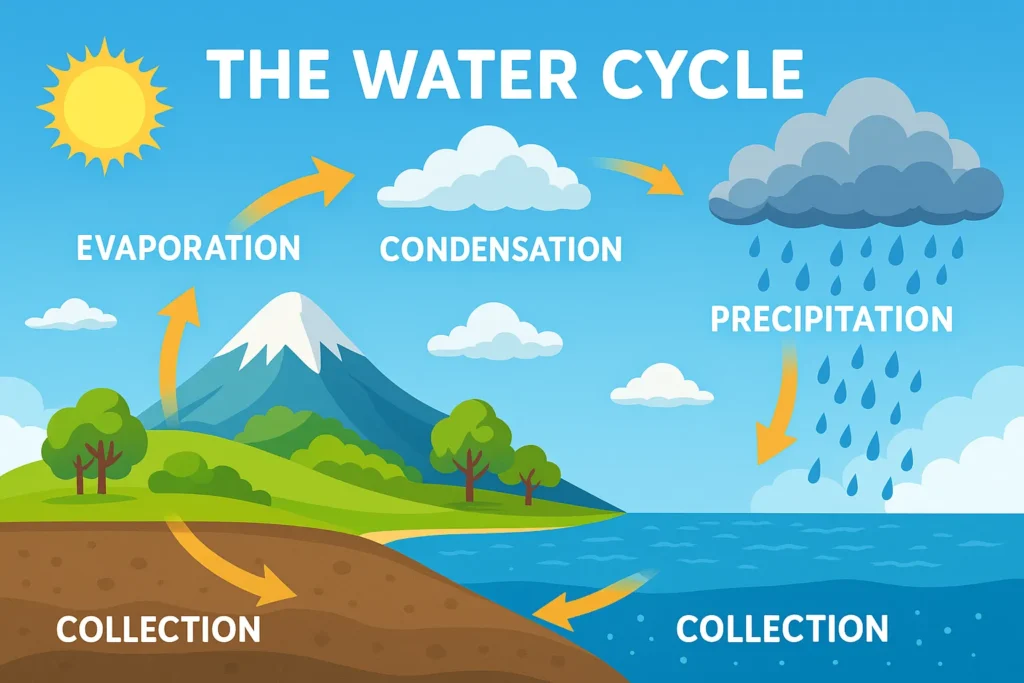The water cycle refers to the continuous circulation of water on, above, and below the Earth’s surface. It is natural water recycling in all its forms — supporting life on Earth.

Water is constantly changing form because it is being recycled through: liquid, gas, and solid. The sun and the force of gravity keep the cycle in motion, and it is happening all around us all the time.
Main Stages of the Water Cycle:
1. Evaporation
Lakes, rivers, and oceans lose water through evaporation and the water is converted to water vapor. Plants also release water through transpiration.
2. Condensation
The vapor ascends and condenses, creating small droplets that cling together to create clouds.
3. Precipitation
When cloud droplets grow too heavy, they fall as rain, snow, hail, or sleet.
4. Collection (Accumulation)
Water gathers again in oceans, rivers, and underground. From here, the cycle restarts.
Other Processes Involved:
- Infiltration: Water enters the earth and adds to the groundwater.
- Runoff: Water that travels across the earth’s surface and collects in rivers, lakes, or the ocean.
- Sublimation: Ice is transformed straight into vapor rather than liquid.
- Deposition: Vapor immediately solidifies into ice, resembling frost.
Why the Water Cycle Matters:
- Keeps water circulating and on supply.
- Regulates climate and weather conditions.
- Helps in food production through supplying clean water.
- Supports ecosystems and biodiversity.
References
The information in this article is based on insights from respected organizations in the energy field. We have reviewed content from the following sources to ensure accuracy and relevance:
Posted by Abu Talha
With a background in science at the A-level, Abu Talha has studied subjects including physics, chemistry, mathematics, and biology. Along with his more than 1.5 years of experience in digital marketing, he is passionate about writing about electric vehicles, sustainable energy, and how emerging technologies are influencing the future.


